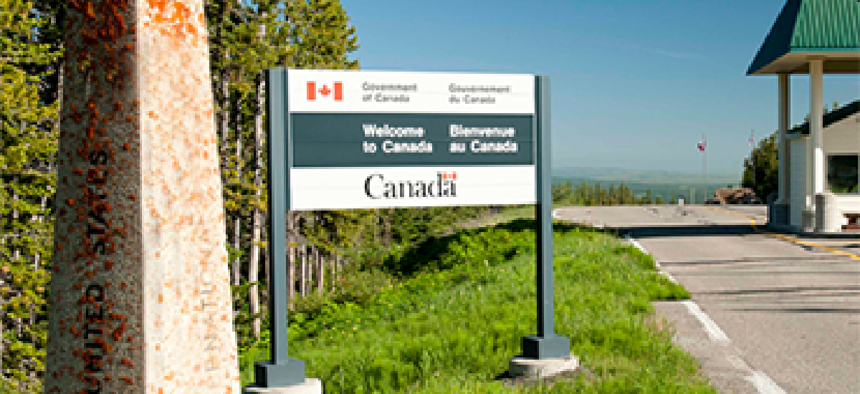DHS pleased with immigration info-sharing pilot program

The first phase of a joint U.S.-Canada effort includes collecting data and reconciling records.

More than 100 million travelers crossed into or out of Canada in 2012. (Photo: Canada Border Services Agency)
The first phase of a coordinated entry/exit data exchange trial between U.S. and Canadian border agencies reconciled about 95 percent of the immigration records it transmitted, according to the Department of Homeland Security.
DHS and the Canada Border Services Agency (CBSA) reported on May 14 the first phase of their Entry/Exit proof of concept information-sharing program had exceeded their expectations. The data exchange program is aimed at cutting down on visa overstays, determining immigration program eligibility and monitoring deportations. Visa overstays have become an increasingly troublesome immigration issue in the U.S. with some studies estimating millions of undocumented immigrants have overstayed the time limits on their visas.
Under the first phase of the three-phase pilot project, DHS said it and CBSA had successfully collected routine biometric information, reconciling immigration exits from one county as entries into the other. According to DHS, only data on third-country nationals—people who weren't citizens of Canada or the U.S.—was used in the trial.
The trial is part of the U.S./Canadian "Beyond the Border Action" plan first unveiled by President Barack Obama and Canadian Prime Minister Stephen Harper in 2011. The program will address security threats at the earliest point possible, facilitate lawful movement of people, goods, and services into Canada and the U.S., and create a long-term partnership to improve the management of the countries' shared border.
During Phase 1 of the Entry/Exit proof of concept trial, DHS and CBSA collected data from four land border crossings along the border using already-established, secure DHS/CBSA connections and reconciled against entry records already on file, DHS said.
The results "significantly exceeded expectations," said the DHS report. Canada reconciled 94.5 percent of the records it received from the U.S., while the U.S. reconciled 97.4 percent of the records sent from Canada. Both countries said they believed the results will improve as the second phase of the program begins in June.
In that phase, set to begin June 30, DHS and CBSA will exchange information collected on third-party nationals, lawful permanent residents of the U.S. and Canada that is collected at automated common land border ports of entry.


